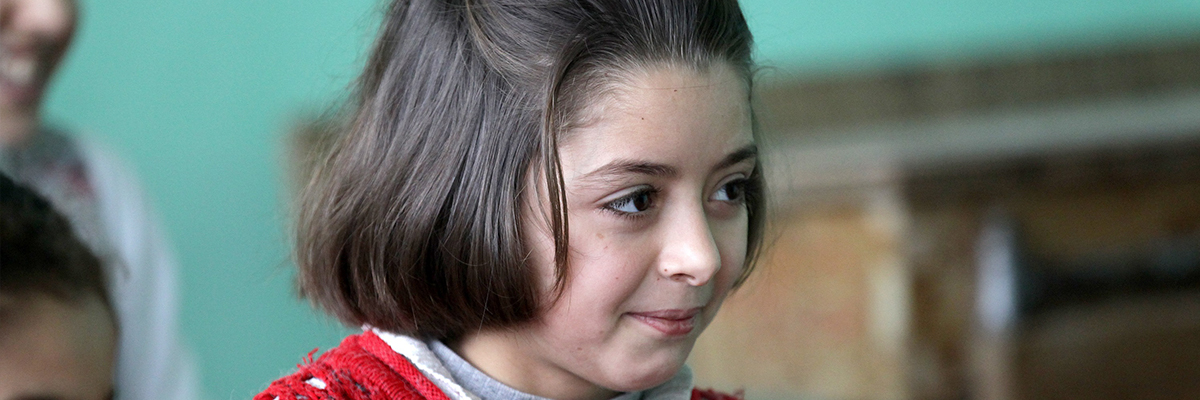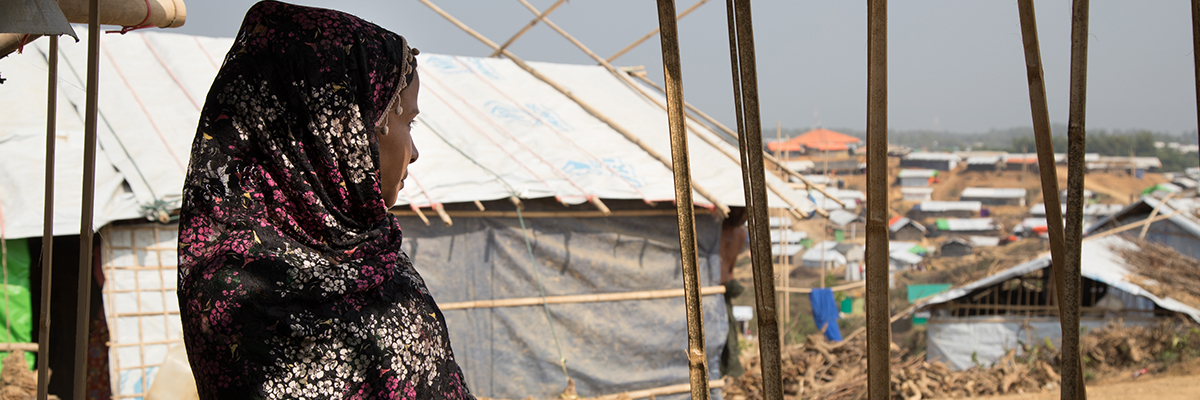"I was in class when my school was hit ... I later found out that many children had been injured."
In Syria, one in three schools have been damaged or destroyed since the start of the war – including eight-year-old Basma's*. She is still full of energy and loves to learn, despite everything she’s been through.
"I am from a town near Damascus city; my home was there and my school too. I really loved my school back home, it was pretty … I had a lot of friends.

"I was in class when my school was hit. We ran out of the school right away … but I later found out that many children had been injured. I have never seen my school or my friends again; I miss them a lot.
"Now I am in this new school [run by Save the Children] and I feel much better. I love the drawings and the colours on the walls. I love the English teacher the most, he is so kind and he teaches us so well."
Schools should be one of the safest places for a child, but they're increasingly becoming a target in wars around the world.
"They set our house on fire with us still in it … we lost two of our children in the chaos."
Hakim's* sons Kabir* and Hadi* are missing, presumed dead, after their village was attacked. Children have faced unimaginable horrors in Myanmar since the escalation of violence against the Rohingya in August 2017.
"When the military came to our village they told us to go in our house and stay there. If we didn't comply, they said, they would beat us up … then they set our house on fire with us still in it.

"We panicked and tried to get out of our house, but everything happened so quickly … My wife and 12-year-old son also made it out of our house, but we lost two of our children in the chaos … I fear that they didn’t make it out of the house in time and were burned alive.
"It took us 15 days to get to Bangladesh. The whole way my daughter was crying. She needs urgent medical attention."
The number of children killed or maimed in conflict has risen drastically in the last 10 years. And many more deaths and life-long health problems in children are caused by the secondary effects of conflict: disease, malnutrition and psychological stress and trauma.
"We face many challenges in this hospital. We lack medicines and medical supplies."
Years of war have decimated Yemen's water sanitation system and its hospitals, leading to deadly cholera outbreaks – and restrictions on imports and medical supplies mean children are dying from this entirely preventable disease.
"Last week, we received 2-3 suspected [cholera] cases per minute, says Doctor Zaid, as he described the dire needs in his hospital in Sanaa, Yemen." I personally received 180 cases in one day last month. The number of patients in need is shocking. People lay in the corridors, and in some cases, we have had to put six children on one bed as there are not enough to go around.
"We face many challenges in this hospital. We lack medicines and medical supplies. We do not have enough doctors and nurses."